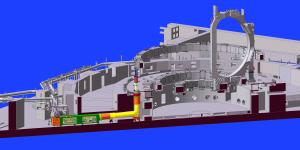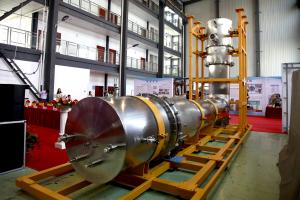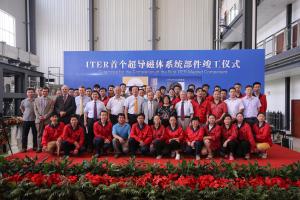At the Institute of Plasma Physics, Chinese Academy of Sciences (ASIPP) in July approximately forty scientists and engineers from the ITER Organization, the Chinese Domestic Agency, the European Domestic Agency, ASIPP and suppliers Keye Company and Henxing Company, took part in a milestone ceremony. ITER Director-General Bernard Bigot, who could not be present, sent his "warmest heartfelt congratulations" to the team members from different institutes who had all come together to realize this significant accomplishment according to schedule.
Arnaud Devred, who has led the Superconducting Systems & Auxiliaries Section at ITER for ten years—and who has made the "journey east" dozens of times—voiced his great sense of pride.
"The feeder system involves some of the most difficult and risky manufacturing and assembly processes of the ITER Tokamak, but thanks to the hard work and dedication of the teams at the ITER Organization, at the Chinese Domestic Agency, and at ASIPP and its subcontractors, we learned how to work together and to reconcile our cultural differences to meet the tough technical and quality control standards of the Procurement Arrangement. If we are at this successful point in the program today it is because, at our level and for our scope of the ITER Project, we have been able to develop the good collaborative spirit and mutual trust that has enabled us to overcome hurdle after hurdle and to achieve our common goals. I can only wish that the cryostat feedthrough for poloidal field coil #4 remains a testimony to common will power and shared resilience."




